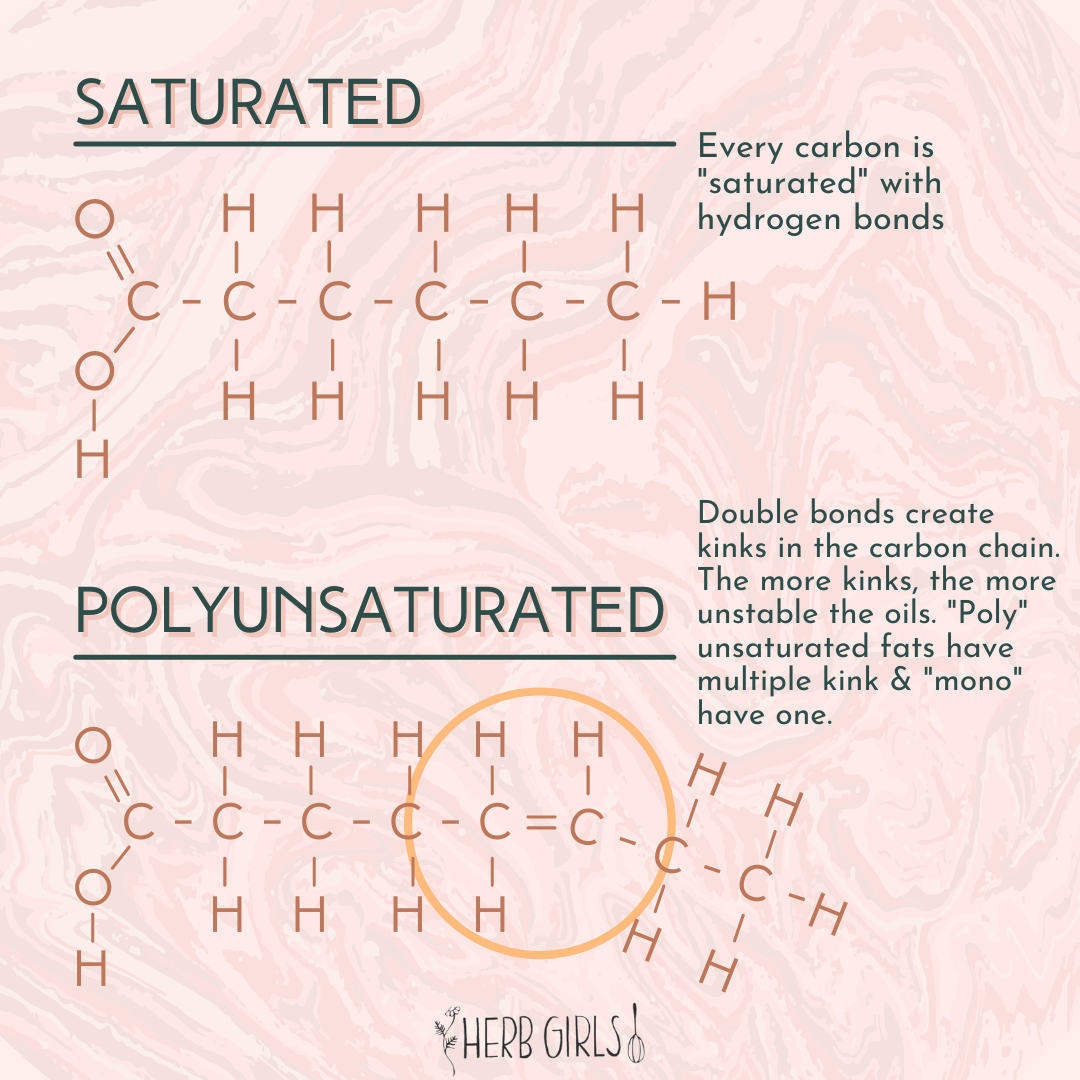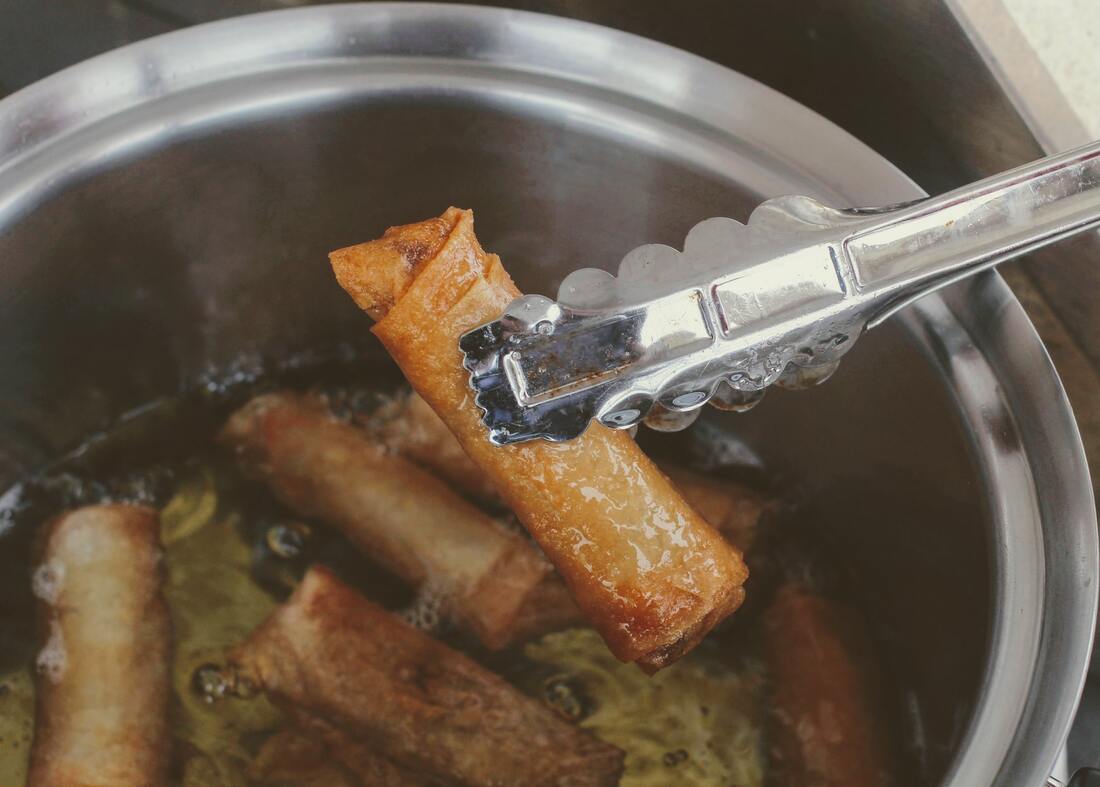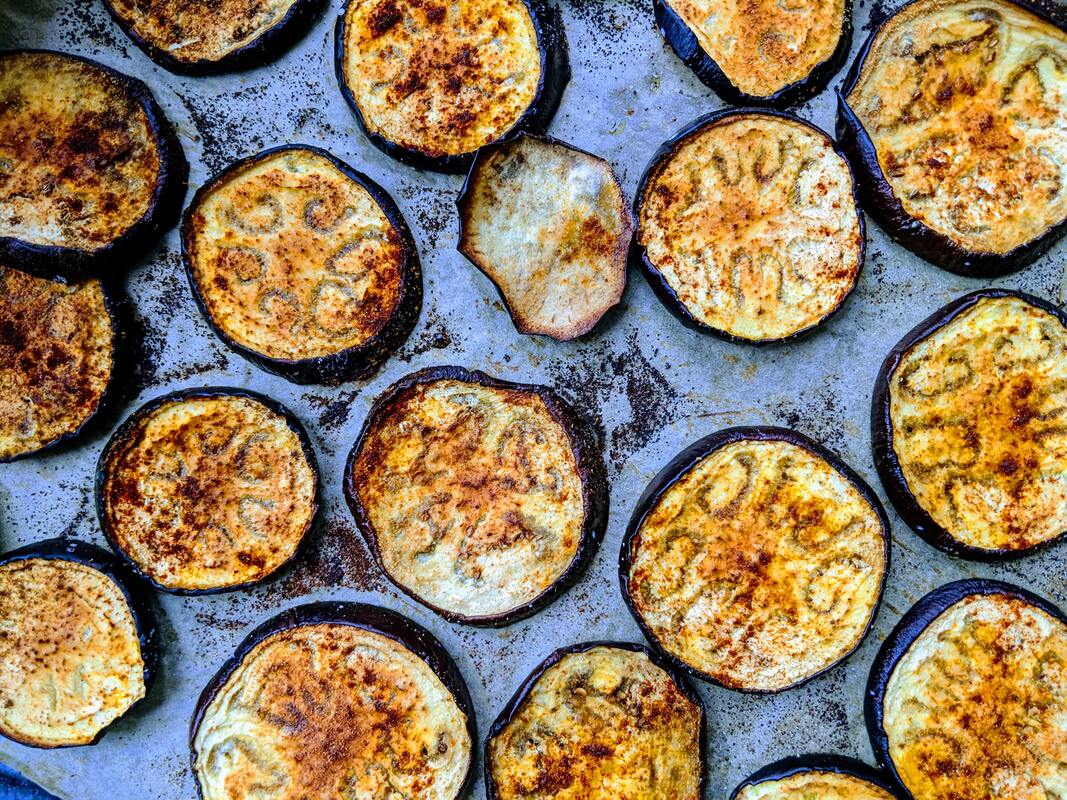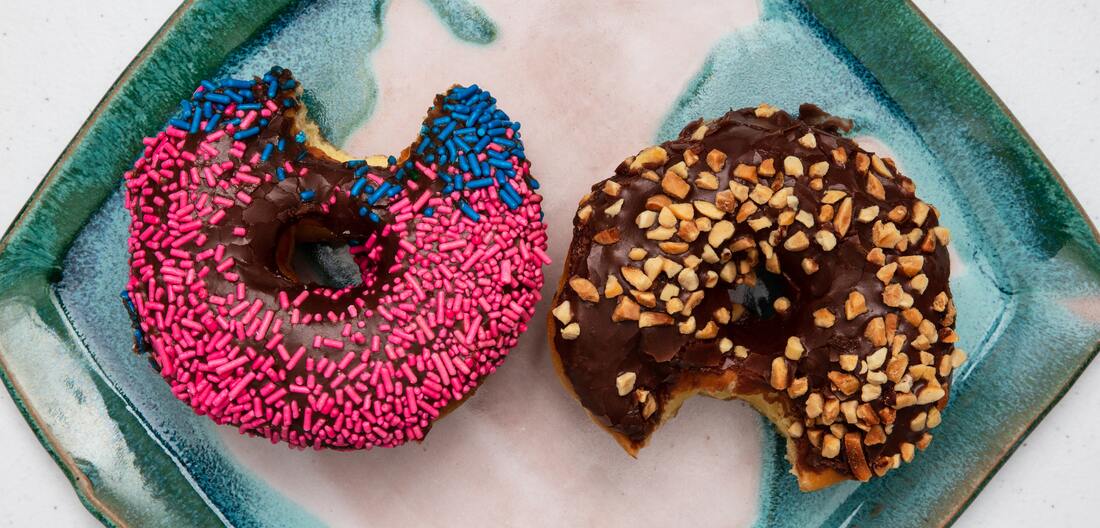|
Part I: The Anal Incident Last fall took me for a ride. I let bad habits return. I let doubts creep in. I sloughed off my self-care routine. Slowly. Gradually. Unavoidably. My body reached a breaking point. You know when you are keeping everything together on the outside, but just below the surface you can tell something is off? We are wise to listen to that, but sometimes we need tough lessons, like the one I was granted one evening last December. when I found myself with deep tummy cramps. The day before I had driven to and from Atlanta in the trafficky rain for work. I remember being tense the whole day. When I returned home, I made an 8 pm pour over coffee to fuel me through some logistical computer work - something that seemed like a great idea at the time. I remember kinda feeling like a badass… to be working so hard and relentlessly. Not surprisingly, the next day I woke up feeling unrested and unwell. My gut was in a knot and I was low energy. I had cramps similar to a period but emanating much deeper inside of me. I wondered if I was just going to start mine early or something. I knew I had meetings all day and wouldn’t be able to tend to my health until the afternoon, so I decided to do a coffee enema after work. For me, coffee enemas had served as a wonderful source of release and energy renewal in the past. So I thought to myself, maybe this will help relieve the pressure-y knots and cramps. Even though I knew coffee enemas are not to be done in times of stress. Even though I knew coffee enemas are not to be done past 3 pm. Even though I knew I probably just needed to take a day off and lay off the caffeine and computer work, I did it anyway. So at 4 pm I’m all prepped for the enema. I’ve got this routine down. In the past, it wasn’t a problem for me to hold in the fluid for 20+ minutes. This afternoon felt different. Almost immediately upon inserting the tip, I clenched up & felt pain. I hadn’t even released any liquid and my body went in immediate rejection mode. I tried to use the restroom, thinking that going might help, but my body just tensed up again. I ditched the coffee enema idea, perplexed as to what was going on, and decided to make some soup. But I couldn’t really stand up. I just wanted to be in the fetal position. So I laid down on the couch until the cramps grew so strong that I surely thought I just needed to go to the bathroom. When I went, it felt like some liquid came out. Maybe I just have food poisoning and am gonna have diarrhea, I thought. But when I wiped, it was pure blood. And in the toilet, more blood. Definitely not coming from a period. Definitely coming from my butt. OUCH. WTF. I was kinda freaking out. It was around 7 pm by now. My husband had just gotten home from work. I told him I didn’t feel well and was going to bed early. I didn’t want to say anything more lest I freak him out, too. I texted my mom, some healthcare friends, and read some articles feverishly on the web as to what this could possibly mean, all the while praying the pain would go away because the cramps were intensifying by the minute. All I could do was rock back and forth in bed, holding my tummy tight, to distract from the discomfort. Throbbing anus. Deep, gnarly cramps. Kinda nauseous. Kinda freaking out. The sense of something was seriously wrong further amplified the pain as strong stress signals pulsed through me. By 9 I couldn’t handle it any more. I was definitely in freak out mode by now. So I told my husband he might need to take me to the hospital. I pulled myself out of bed to use the restroom. The downward pressure was so intense but if I tried to push to release the pressure, seething pain just emanated throughout the whole lower half of my body. So much so that my ears started ringing so loud that I couldn’t really hear what my husband was saying. I couldn’t stand up. I was so dizzy and light-headed, I thought I might faint. I was in so much pain. I couldn’t fathom walking down the stairs to get into his car. The look of fear on his face. The bewilderment twisted with pain on my own. It was heavy. I didn’t even care I was half naked rolled in a fetal position on the floor. I didn’t care if it would be $10k in hospital bills to call an ambulance. I was desperate. Fast forward a day and a half + an absurdly large hospital bill I still don’t understand + 1 CT scan + lots of IV fluid and unwanted antibiotics later…. and I’m back home. I am still only pooping mucus and blood. I still can’t eat. My ass still aches with the pressure of a rhinoceros sitting on my colon. And I am sooooooooo confused and depressed. I think being in the wellness space so long, seeing clients, teaching on health…. well it just makes you just feel like a total and complete failure when something like this happens. Imposter syndrome strikes and on top of your physical pain, you now have this mental component of feeling like a failure. It was a rough time. But it was a time I needed, in some weird and wacky way. For the week following my anal incident (as I like to call it), I was completely at the mercy of my body and its needs. I was in full-blown senescence. My only focus was resting and getting well. My only focus was pooping not blood and eating again. I did nothing else. I let my mom and husband take care of me. I let my coworkers take care of my work. I let my body lay on the couch and not feel bad about it. I let my emotions do their thing. I moped. I cried. I pleaded to God. Looking back on it, I was probably being a drama queen, somewhat delighting in feeling so dismal and sorry for myself, but that is what I needed to heal. I took several hot soaks a day. The heat of the water, the gentleness of its touch, was the only thing that brought relief. At one point when my mom and husband were out running errands, I drew myself another bath to relieve the aching pressure. This time it was quite intense. I still had the constant sensation to poop but was only passing mucus and blood. So I swayed back and forth in the tub, praying at the top of my lungs. Chanting, breathing audibly. It was so cathartic. I was crying both happy and desperate tears. And then suddenly something shifted. I felt a blockage release. I felt a glimmer of hope return. I felt Divinity present. I felt an immense love for my body, one I’ve never felt before. This is what this whole deal was about. The clenching, the resisting, the denying myself grace, the denying my body a voice. The deep pattern these bad habits had etched into me. THIS was the root. THIS is what needed attention. My gut, my second brain, was simply responding to this defective state I’d created internally. My gut was simply responding to my incessant, habitual denial. My body just wanted some love. And not just superficial love by eating “right” and exercising. REAL, unconditional, devoted love. More tears. More hugging my knees in tight, saying I love you I love you I love I’m so sorry I’m so sorry I’m so sorry. And my recovery had begun. That night I finally stopped pooping blood. I finally felt the delight of being hungry again. I had some energy to go on a walk. I had some energy to chuckle at myself. Part II: I've Bean Trying Something New God speaks through people. I had this belief affirmed on a long drive to the beach for New Years, about 1 month after my anal incident. A dear friend shared a podcast with me called “Magic Beans”. Having several hours of open road ahead of me, I gave it a whirl. Thirty minutes in, I’m crying. I call her and thank her for sending me exactly what I needed to hear. The podcast featured an interview with a woman diagnosed with Crohn’s around my age. Previously, she was living the successful business woman life, looking feeling great although just under the surface her body was starving for attention. Woah, that resonated. Her Crohn’s diagnosis was far more severe than my potential ulcerative colitis state, but similarities between her journey and my own kept me hooked on every word. Having had every other treatment fail, both conventional and alternative, she was wasting away to a feather and losing hope by the day. It took a random recommendation of a friend (again, God speaks through people) sharing a book on beans for healing inflammatory GI conditions. She read the book and thought it was ridiculous, but something inside her told her to try it out nonetheless. The rest is history (this woman is Unique Hammond, by the way!). Now the picture of health, beaming, glowing, and sharing her story with the world, I was compelled to follow suit. I tried the bean protocol in earnest for 3 weeks preceding my diagnostic colonoscopy. I tried to do it longer but it took about a week and a half to wean off coffee, matcha, black tea, AND chocolate entirely (a premise of the bean protocol is to reduce the amount of work your liver has to do, and caffeine elicits a big response from the liver)... so I did what I could. Apparently 3 solid weeks was all I needed because I received an absolutely clean bill of health following my colonoscopy (which was ordered to affirm that I had colitis). The doctor even said, “I had a perfect colon.” YALL, BODIES WERE MADE TO HEAL. If you have a cut and you keep it clean and don’t pick on it, a scab will form and eventually that cut will heal. The same goes for our intestines. Did you know the epithelial cells of our colon recycles every 3 DAYS?! That means 3 solid days of staying away from any offending agents, not “picking” or interrupting the healing process that takes place when we just get out of the way… that might be all it really takes. Well it took me 3 weeks to take my colon from colitis-central to the best it’s ever BEAN (pun intended). AND WOW. I’m still in awe. I’m still unpacking. I’m still eating beans every day, multiple times a day. I am still figuring it out. I’m actively working towards better understanding the ecology of my body. In truth, the bean protocol teaches certain things that counter what I’ve been taught. But I can’t deny the results I’m seeing, and I can’t deny the way I feel. So another major lesson through this whole process has been the value of CONSIDERING THE ALTERNATIVE - something that’s hard to do when you have certain ideals or beliefs that have been etched into your brain. When we get trapped in our little cognitive bubbles- be they health, politics, religion or philosophy-related- it’s so easy to think that anything other is completely crazy, wrong, obtuse. We all do this, and it’s okay. It gives us stability and footing. But I’m finding that a part of becoming more adaptable & interesting is humbling ourselves to the alternative - Being open to being wrong. Being willing to learn more and judge less. Stepping outside our comfort zone widens our base for a stronger, sturdier mode of being. For me, considering the alternative healed my gut and gave me a massive dose of humility and compassion I desperately needed. Was it JUST the beans that healed me? Of course not. It was the introspection, the grace, the humility, the curiosity, the openness. Physical pains are never ever ever ever ever just physical, EVER. They can’t be. We aren’t just matter. We have intangible parts of us that hold the reins, directing our matter, harming or helping it. It’s so easy for me to get caught up in the physical because it’s an easy default mode when life gets stressful. But I have to always be reminding myself that my mind, heart, & soul come first. So obviously by the length of this blog, it’s evident I am still unpacking all the lessons learned following my anal incident. And hopefully by the title of this blog, you can see that humor will always serve an invaluable role for me in any healing situation. It’s an honor to share this with you- in the hope that it might make you feel edified, inspired, or simply a little less alone if you are going through something right now. The original bean/soluble fiber protocol is the work of Karen Hurd, although you can find other resources from individuals and practitioners who have trained under her, like Unique Hammond’s course. I’m enrolled in a few of her courses on treating digestive disorders but she offers courses on everything from hormones to diabetes and mental health. The premise of her work is in clearing toxins from enterohepatic circulation by eliminating anything that elicits unnecessary cellular responses (that the liver has to break down) and using soluble fiber as a means to remove toxins from the bile. Her methodology is based on the idea that recirculating toxins in the bile wreaks havoc all over the body, affecting different organ systems depending on the individual.
(aka PUFAs!)Saturated fats are fatty acids with carbon chains that are fully loaded (or saturated) with hydrogen bonds. These chains stack perfectly on top of one another, making them solid at room temperature. Think butter, lard, and coconut oil. Unsaturated fats have unfilled hydrogen bonds, creating kinks in their carbon chains which keeps them from stacking on top of one another uniformly. These kinks make them liquid at room temperature. Poly-unsaturated (poly- means many) fats have multiple kinks in their fatty acid chains and mono-unsaturated fats (mono- means one) have one kink. Sesame and avocado oil are naturally produced unsaturated fats; olive oil is a naturally occurring mono-unsaturated fat. While humans love categories, all naturally occurring fats are actually a combination of poly-, un-, and mono-unsaturated fats. Butter, for example, is 25% mono-unsaturated. Why Clear Veggie Oils Are Problematic
"These now rancid fats trigger a cascade of inflammatory processes in the body. This is an issue because clear veggie oils are everywhere from healthy snack foods to fried food at both fancy and fast-food restaurants. We can get all the polyunsaturated fats we need by consuming Whole Food sources of nuts, seeds, & cold water fish. The abundance of clear veggie oils, however, has tipped our fat ratios out of balance. The primary PUFAs to look out for are*: canola oil, soybean oil, cottonseed oil, safflower oil, grapeseed oil, & sunflower oil Get this: the ideal ratio of polyunsaturated Omega 6 (Linoleic Acid, LA) to Omega 3 (Alpha-linolenic Acid, ALA) is 1:1... But the average America has a ratio of ~20:1! This stark imbalance means major inflammation in the body (It’s also the underlying reason why so many health professionals recommend fish oils, or Omega 3s). It makes sense that most people - even health-conscious ones - have an overabundance of rancid PUFAs in their life. Of course anything fried is going to present your body with inflammatory omegas, but ready-made snacks like cookies, chips, crackers, dressings, and sauces are some of the biggest offenders. Since clear veggie oils are often subsidized and very cheap, they are used for baking, frying, and sautéeing at even the fanciest restaurants. It's impossible to avoid every single PUFA as a modern human, but bringing awareness and avoiding them as much as you can will work wonders! Fatty Takeaways
*You CAN find good quality veggie oils that are cold-pressed such as walnut, flax, and sunflower even; however, these are very few and far between, quite expensive, and must be stored in dark bottles away from light and heat.
Nightshades are a fascinating family of over 2,000 species of plants including: Ashwagandha, Bell peppers (aka sweet peppers), Bush tomatoes, Eggplant, Goji berries, Ground cherries , Hot peppers (such as chili peppers, Jalapenos, habaneros, chili-based spices, red pepper, and cayenne pepper), Paprika, Pepino (aka pepino melon), Pimentos, Potatoes (but not sweet potatoes), Tomatillos, & Tomatoes While many nightshades are tasty, many are quite deadly, like the notorious Locoweed (Datura stramonium) or Belladonna (Atropa belladonna). Nightshade sensitivity is an underlying cause in many inflammatory conditions today, particularly those including: muscle and joint pain, morning stiffness, arthritis, insomnia, heartburn, GERD, and autoimmunity. Along with soy, many common nightshades are relatively new to the Western and European diets, not arriving to North America until the 18th century. In fact, the tomato was initially used only as an ornamental plant because it was believed to be poisonous like some of its relatives. Despite their relative new-ness to the Western diet, nightshades are everywhere today: french fries, mashed potatoes, tomatoes, pizza, hot sauce, and let’s not forget tobacco. Here’s why you might want to reduce or avoid these powerful plants all together for a period of time: 1. They are “calcinogenic”. This means they can cause soft tissues to calcify (calcinosis) due to their positive effect on blood calcium levels. The body does not like high blood calcium, so the quickest way to remedy this situation is to deposit the extra calcium into the soft tissues. Each hypercalcemic episode lasts only a few moments but also leaves a small deposit behind. Over time, these deposits lead to the condition known as calcinosis, contributing to hardening of the vasculature. 2. They contain acetylcholinesterase inhibitors. Solanine and similar glycoalkaloids found in nightshades inhibit the breakdown of the neurotransmitter acetylcholine. This causes extended muscle contractions and a major reason why those sensitive to nightshades experience morning stiffness. Solanine also disturbs digestive function (common in IBS-sufferers), gene expression of intestinal cells, and inhibits proteolytic enzyme activity. 3. They contain nicotine, a substance that is both addictive and inhibits proper inflammation in the body when out of balance.
And let's not forget saponins... 5. Saponins can poke holes in your gut - All plants contain saponins, but Nightshades are quite high in an especially corrosive class of them. Saponins are detergent-like compounds that protect plants from predation by dissolving cellular membranes. This is great for protecting the plant’s seeds from predation, but not so great when those saponins damage the cells that line our gut (enterocytes). Saponins can literally poke holes through our cells’ protective walls, creating a case of leaky gut. Essentially, the holes allow things to pass through that shouldn’t be in our bloodstream. While some saponins are beneficial and allow for the absorption of certain minerals without harming the cells, others can be more corrosive and damaging to our intestinal wall. Glycoalkaloids, abundant in Nightshades, are one such class of saponins that aren’t so gentle. Glycoalkaloids (alpha-solanine and alpha-chaconine in potato, alpha-solanine in eggplant, and alpha-tomatine in tomato) are very well studied and have revealed issues with absorption and inflammation in many animal studies. For people dealing with systemic inflammation, autoimmune conditions, and issues with digestion, taking a break from Nightshades is a wise choice. The low-level toxic exposure from glycoalkaloids can aggravate the issues we are trying to resolve. Resources:
In, F. T. A., Out, F. T. A., & Reintroductions, P. ALL ABOUT NIGHTSHADES. McFarland, E. (2013). The Link between nightshades, chronic pain and inflammation. GreenMedInfo LLC. Robertson, P., & Roberts, P. (2003). The Solanaceae and their paradoxical effects on arthritis and other degenerative disease states The unfortunate truth: We live in a bit of a toxic soup these days. From the water to the air, our soil to our food supply, and all the products we use to clean our house, skin, and hair - we are inundated in foreign information that can overwhelm the body. And let’s not forget emotions and endogenous toxins that our bodies must also process! Toxins interact and compound, presenting a major burden to the body if our drainage and detox pathways and cellular metabolism aren’t functioning in tip-top shape. Our bodies are designed to drain and detox toxins.... but there's a problem: the modern diet and lifestyle aren't conducive to supporting daily detox. So, we feel the need to do extreme fasts or cleanses to purge us of all the accumulated crud. But that attitude just presents another issue: the body doesn’t like extremes; it prefers gentle transitions and steady, slow progress. So lots of these crash diets and detoxes just leave us feeling exhausted and deprived. Sure, we might have lost a few pounds, but they will likely come right back, along with the other issues we were trying to remedy with a quick fix. The ideal scenario would be to open and support our drainage & detox organs while also eliminating toxic exposure and build-up... ...which is where an elimination diet comes in. You might be thinking to yourself: "But I believe in intuitive eating and fear that restriction might lead to unhealthy or obsessive thoughts about food." You aren't wrong. Restricting food can mess with individuals who have an eating disordered past, and not everyone is ready for an elimination diet. However, until we take a break from something, we will never know what effect it is having on our body, mind, or spirit. Furthermore, many foods we daily consume could be aggravating or even causing injury to our bodies. Elimination diets don't have to be about deprivation - they should be about nourishing yourself and reconnecting with your body's needs. Unfortunately, food isn't simple anymore and our modern food supply is not clean. Even if you only shop at health food stores, you are still going to be bombarded with rancid oils, denatured proteins, and added sugars. You will find foods that have come from the other half of the globe and foods that have been exposed to chemicals (yes, even organic ones) that confuse and clog your body. When we don't give our body a break, it is going to start malfunctioning sooner or later. A temporary elimination diet, focusing on whole foods can offer that break. Take me for example. I was your classic skinny, cardio-obsessed vegetarian. Whole grains, fruits and nuts were LIFE. At this same time, my gut was in terrible disarray. I had stomach aches and bloating daily and I rarely pooped. An elimination diet would have been perfect for me - not one that restricted calories, but one that gave me a break from the foods that I’d grown sensitive to. My digestive juices had grown weak and lazy (meat requires lots of stomach acid, so if we don’t ever consume it, our body won’t feel the need to make as much), and all those complex carbs I was consuming were not breaking down like they should have. Instead, they were passing into my colon undigested, serving as a food source for bad bacteria, causing all that dysbiotic bloating and cramping. And every morning I ate my grape nuts, oat milk, and raisins, I was just repeating the vicious cycle all over again. If you gave 21-year old Eileen some bacon and eggs, a warm bowl of pumpkin soup, chicken piccata and roast carrots, I would have watched my digestive fire return and my bloating and dsybiosis dissipate as I starved the bad bacteria that had colonized my gut. That meal plan doesn’t sound like restriction does it? I guess that’s the whole point of this article: What about food sensitivity tests? There are gobs of tests out there that will quickly tell you your sensitivities without having to actually eliminate anything. However, even with all that technology, a good ole’ fashioned elimination diet + slow reintroduction still remains the gold standard of uncovering food sensitivities. Cross-reactivity is a thing, and even if it seems like a quick-fix, oftentimes those tests will come back showing that you are sensitive to everything (true story!). So save yourself the money and confusion, and consider doing an elimination if you know something is going on with your gut health but don’t know where to start. "Shortcuts make long delays." - J.R.R. Tolkien, The Hobbit In our newly launched 5-week program Dump the Detox, we've included a 3 week elimination diet (called "The Spring Clean") plus a 1 or 2 week Reintroduction period. This course not only allows you to take a break from certain foods that may be harming you, but also walks your through the drainage and detox funnel. This way, you learn how to open and nourish those pathways systematically so your body can handle toxins better & you can live life more freely! In the blogs to come, we will be explaining the why behind eliminating the food groups we do in our Spring Clean. See you there!
|
Eileen Brantley & Amy WrightWe are Herb Girls Athens, LLC. Read our blog! Archives
November 2022
Categories
All
|
















 RSS Feed
RSS Feed
